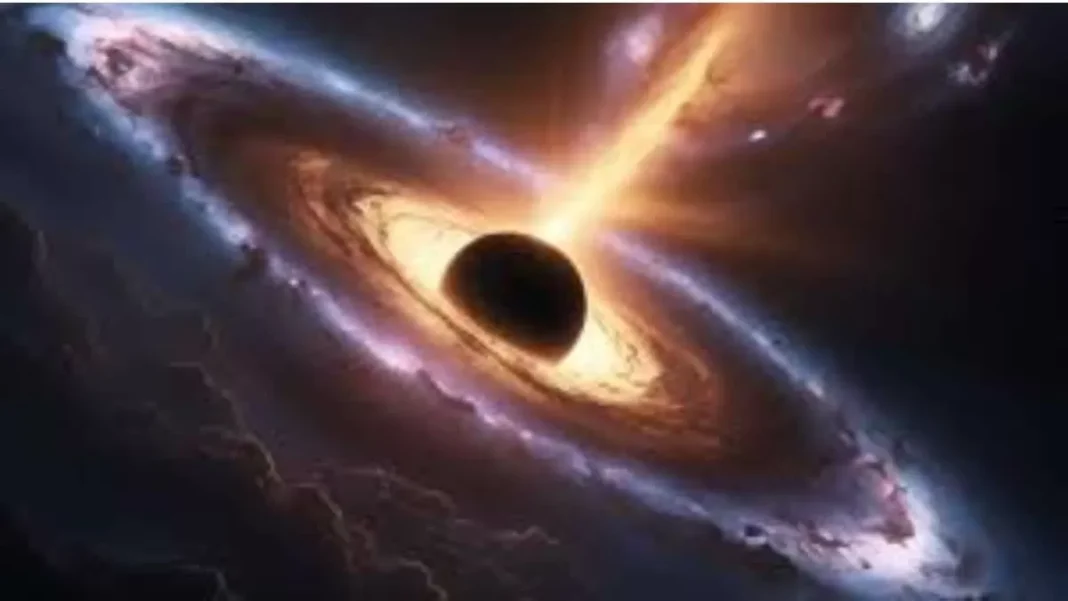The universe is full of mysteries and wonders that continue to amaze and challenge us. One such event that has recently captured the attention of the scientific community is the GW231123 event, which has been hailed as the most massive black hole merger ever detected through gravitational waves.
The event, observed by the LIGO-Virgo-KAGRA network, involved the merging of two black holes with masses of 100 and 140 solar masses. This is a significant discovery as it challenges our current understanding of black hole formation and evolution.
Black holes are one of the most enigmatic objects in the universe. They are regions in space where the gravitational pull is so strong that nothing, not even light, can escape from it. They are formed when a massive star dies and collapses under its own gravity. However, the merging of two black holes of such extreme mass and spin, as seen in the GW231123 event, suggests a more complex origin.
According to current models, black holes with masses greater than 65 solar masses are not expected to exist. This is because stars with such high masses are thought to collapse into supernovae, leaving behind a remnant neutron star. Therefore, the discovery of black holes with masses of 100 and 140 solar masses challenges our understanding of how these massive objects are formed.
The GW231123 event was first detected on November 23, 2023, by the LIGO-Virgo-KAGRA network, which consists of three gravitational wave detectors located in the United States, Italy, and Japan, respectively. These detectors work by measuring tiny ripples in space-time, known as gravitational waves, that are produced when massive objects, such as black holes, merge.
The detection of gravitational waves was first predicted by Albert Einstein in his theory of general relativity. However, it was not until 2015 that the first gravitational wave was directly detected by the LIGO detectors, confirming Einstein’s theory and opening a new window into the universe.
Since then, the LIGO-Virgo-KAGRA network has detected several gravitational wave events, but the GW231123 event stands out as the most massive black hole merger ever observed. The sheer size of the black holes involved in this event has left scientists baffled and excited about what it could mean for our understanding of the universe.
One of the most intriguing aspects of the GW231123 event is the spin of the black holes. The spin of a black hole is a measure of how fast it is rotating. According to current models, black holes with masses greater than 65 solar masses are not expected to have a significant spin. However, the black holes involved in the GW231123 event were found to have a spin of about 0.7, which is considered to be quite high.
This high spin suggests that the black holes may have formed through a different process than the traditional collapse of a massive star. It is possible that they may have formed through the merging of smaller black holes, or through a process known as hierarchical merging, where smaller black holes merge to form larger ones.
The discovery of the GW231123 event has opened up a whole new realm of possibilities for black hole formation and evolution. It challenges our current models and theories, and scientists believe that it may take years to fully understand its implications.
One of the key questions that scientists are trying to answer is how these massive black holes came to be in the first place. It is possible that they may have formed in the early universe, where conditions were different from what we see today. Alternatively, they may have formed through a series of mergers over billions of years.
The GW231123 event has also shed light on the importance of gravitational wave detectors in studying the universe. These detectors have opened up a new way of observing the cosmos, allowing us to see things that were previously invisible. With further advancements in technology, we can expect to detect even more massive black hole mergers in the future, providing us with valuable insights into the workings of the universe.
In conclusion, the GW231123 event is a groundbreaking discovery that has challenged our current understanding of black hole formation and evolution. It has opened up new avenues for research and has the potential to revolutionize our understanding of the universe. As scientists continue to decode its full implications, we can only wait with bated breath to see what other mysteries the universe has in store for us.


